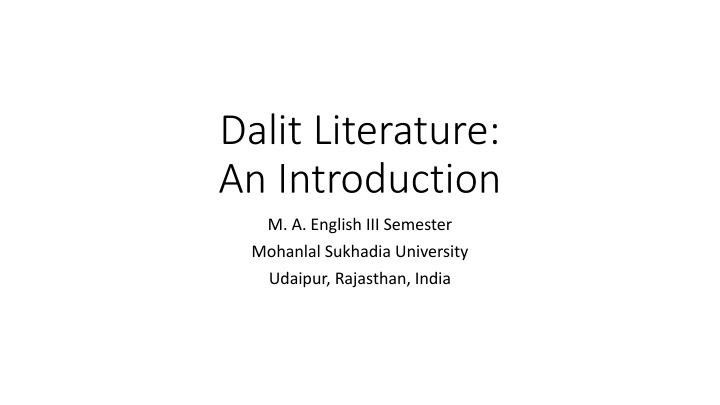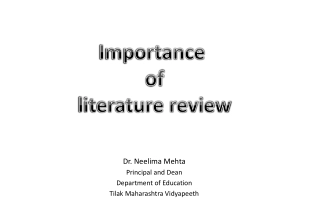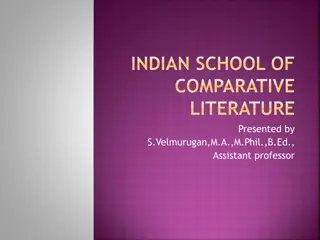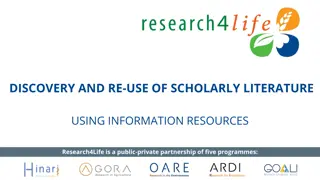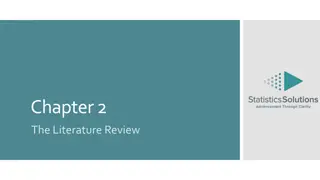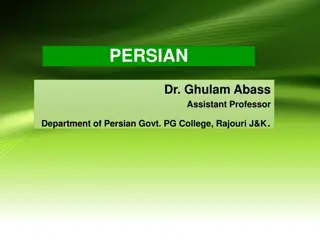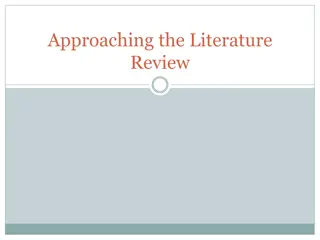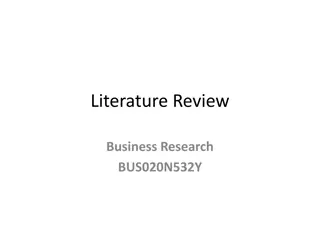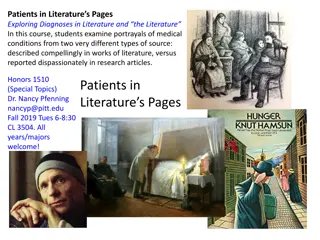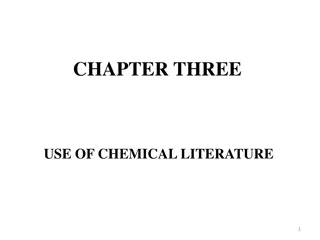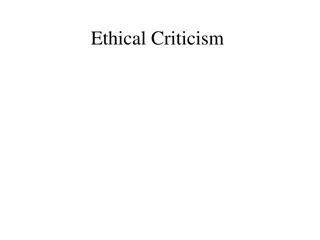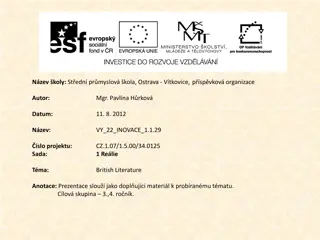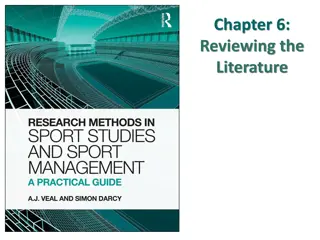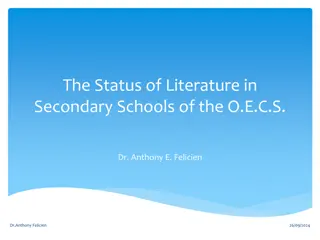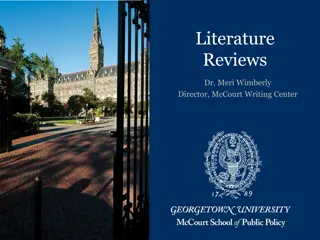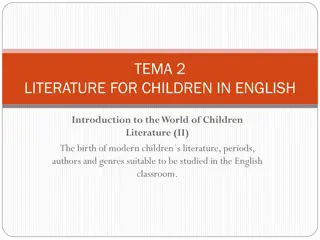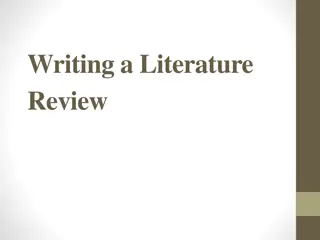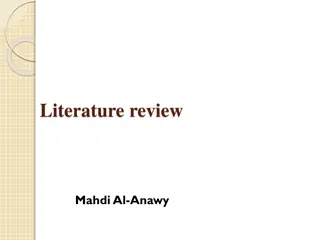Dalit Literature: A Comprehensive Overview
Delve into the world of Dalit literature, exploring its origins, themes, and impact on society. From the definition of Dalit literature to the emergence of key movements and figures, this introduction sheds light on the struggle for freedom, dignity, and justice within the Dalit community in India.
Download Presentation

Please find below an Image/Link to download the presentation.
The content on the website is provided AS IS for your information and personal use only. It may not be sold, licensed, or shared on other websites without obtaining consent from the author.If you encounter any issues during the download, it is possible that the publisher has removed the file from their server.
You are allowed to download the files provided on this website for personal or commercial use, subject to the condition that they are used lawfully. All files are the property of their respective owners.
The content on the website is provided AS IS for your information and personal use only. It may not be sold, licensed, or shared on other websites without obtaining consent from the author.
E N D
Presentation Transcript
Dalit Literature: An Introduction M. A. English III Semester Mohanlal Sukhadia University Udaipur, Rajasthan, India
Definition Baburao Bagul, a Dalit writer, greatly widens the scope of Dalit literature and connects it to human liberty (rights) and defines the term as below: The Literature that advocates human liberty that treats human beings as superior to any other things in the world and that strongly opposes/condemns the idea of superiority based on false distinctions like race, varnas and castes is called Dalit literature. Dalit Literature in Marathi: An Introduction Shuddhodhan Kamble The Context (Quarterly e journal of language, literary and cultural studies) Vol.2, Issue 2 (246) April 2015. ISSN 2349 4948.
what is in a name? 1. Untouchable( achhuut)/ Harijan/Bahujan/ Dalit- social, economic, political cultural oppression 2. Caste system in Indian Hindu Society- Brahmin, Kshtriya, Vaishy, Shudra 3. Ambedkar- the pioneer of anti-caste movement, followed Buddha(6thc. BC), Chokhamela (14thc.), Mahatma Phule (19thc.) 4. Term dalit was first used in 1958 by Anna Bhau Sathe, in the first Dalit Literary Conference that passed a resolution defining the term 5. Dalit Lit. gained momentum with the stories of Baburao Bagul, in 1963; poetry of Daya Pawar, Waman Nimbalkar, Arjun Dangle, Namdeo Dhasal
Dalit Panthers 1972 in Bombay and Dalit Sangharsh Samiti in 1970s in Karnataka 1. The leaders of political movement were the writers 2. Originally Marathi writers led the movement for social change 3. Highlighted the differentness of Dalit literature 4. Rejection of Indian Literature as Hindu, elite, and uppercaste 5. Rejected Gandhian Anticolonial nationalism 6. Dalit Panthers Manifesto 1973 and Gandhi- Ambedkar debate 7. In 1990s, Dalit writing became a pan Indian Phenomenon 8. Dalit Women s Autobiographies
Differentness History of atrocities, humiliation, servitude Inhuman, sub-human treatment To be or not to be born Struggle for freedom, dignity, self-respect Different experience, thoughts, expression, techniques Aesthetics of mainstream literature can not be applied here Writings are a part of the movement for change Purposeful, responsible discourse of concern
Identity is all important Assertion of an identity is central to the struggle for justice The discourse rejects the hegemonic dismissal of the issue of identity. Reject Gandhian condescendense implied in the term Harijan Choose Dalit, crushed, to highlight the tradition of oppression There is everything in a name, unlike Shakespeare s essentialist idea- What's in a name? that which we call a rose By any other name would smell as sweet. William Shakespeare, Romeo and Juliet
